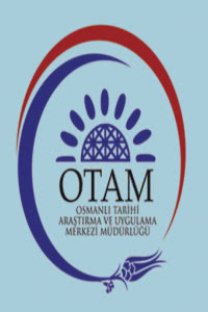Jews in the state agencies and offices of the Bosnian Vilayat from 1868 to 1878 (A framework of understanding issues of minorities in the Ottoman Empire in the second half of the 19th century)
1868-1878 Yılları arasında Bosna Vilayeti Devlet Kurum ve dairelerindeki Yahudiler (19. Yüzyılın ikinci yarısında Osmanlı İmparatorluğu’ndaki azınlık meselelerini anlamak için genel bir çerçeve)
___
BARTAL, Israel, Geschichte der Juden im östlichen Europa 1772–1881, Vandenhoeck & Ruprecht, Gohttingen 2010.Bosna [official newspaper of government of Vilayat Bosnia], No. 51, pg. 1, Sarajevo- Saraybosna: Matba‘-i Vilāyet-i Bosna.
ĆOROVIĆ, Vladimir, “O Istoriji Jevreja Bosne i Hercegovine”, Bosna i Hercegovina, Beograd 1925.
DUBNOV, Simon, Kratka istorija jevrejskog naroda (prev. Andrija Gams, Josip Pressburger), Beograd: Savez jevrejskih opština Jugoslavije, Beograd 1982.
LEHMANN, Matthias B., Ladino Rabbinic Literature and Ottoman Sephardic Culture, Indiana University Press, Bloomington: Indianapolis 2005.
LEVY, Moritz, Die Sephardim in Bosnien, ein Beitras zur Geschichte der Juden auf der Balkan-Halbinsel, Sarajevo 1911.
MIOVIĆ, Vesna, The Jewish Ghetto in the Dubrovnik Republic (1546-1808), Zagreb– Dubrovnik: Hrvatska akademija znanosti i umjetnosti 2005.
MULA, Muhamed Mestvica, Popis uzajamnog jamčenja stanovništva u Sarajevu iz 1841. godine (transl. Derviš Korkut), Vol. 1, Sarajevo: Muzej grada 1970.
OLGUN, Ülkühan, Osmanlı Son Dönemi Yahudilik ve Hahambaşılık, Giza Yayınları, Đstanbul 2009.
PANOVA, Sneschka, Die Juden zwischen Toleranz und Völkerrecht im Osmanischen Reich: Die Wirtschaftstätigkeit der Juden im Osmanischen Reich (die Südosteuropaländer) vom 15. bis zum 18. Jahrhundert, Frankfurt am Main & Wien [u.a.]: Petar Lang 1997.
- ISSN: 1019-469X
- Yayın Aralığı: 2
- Başlangıç: 2006
- Yayıncı: Ankara Üniversitesi Osmanlı Tarihi Araştırma ve Uygulama Merkezi
Circassian colonization in the danube Vilayet and social integration (preliminary notes)
Yanya Vilayetinin durumuna dair hazırlanan layihalar ve sonuçları
Berlin Antlaşması sonrasında Balkanlar’da Cemaat-i İslamiyelerin Teşekkülü (1878-1918)
Balkan Savaşları sırasında pomakların zorla tanassur edilmesi (1912-1913)
Arnavut milliyetçi doktrininde Osmanlı İmparatorluğu’nun ve Avrupa’nın algılanışı
The Sancak of Prizren in the 15thand 16th century
